
Books
Books
Top 100 Children's Books:
Science
Top 100 Children's Books:
Science
Compiled by The
Children's Literature Nook
ASTRONOMY
Cole,
Johanna. The Magic School Bus Lost in the Solar System. Scholastic,
1990.
Audience: 2-4
Audience: 2-4
Kerrod,
Robin. The Children's Space Atlas.

This book is ideal for all junior space
explorers and enthusiasts who have questions about our galaxy
and the worlds beyond it. The voyage begins with an explanation
of how, when, and why our solar system came into being. It ends
with an account of telescopes, probes and rockets which help
us learn about space with a look at what the future may bring.

This book is ideal for all junior space explorers and enthusiasts who have questions about our galaxy and the worlds beyond it. The voyage begins with an explanation of how, when, and why our solar system came into being. It ends with an account of telescopes, probes and rockets which help us learn about space with a look at what the future may bring.
Usborne
Young Scientist Series. Stars and Planets.
This is a beginner's guide to the universe we live in. Its
clear text and detailed pictures take the reader on a journey
through familiar sights of the night sky and on to the frontiers
of the unknown.
This is a beginner's guide to the universe we live in. Its clear text and detailed pictures take the reader on a journey through familiar sights of the night sky and on to the frontiers of the unknown.
An Usborne Guide. The Young
Astronomer.
Designed for the beginning astronomer, this book introduces the
fascinating study of the night sky.
Designed for the beginning astronomer, this book introduces the fascinating study of the night sky.
Vancleave,
Janice. Astronomy for Every Kid.


Yolen,
Jane. Mother Earth Father Sky
Yolen,
Jane. Owl Moon


BIOLOGY
Balkwill, Fran. Cells Are Us.
Balkwill, Fran. Cell Wars.


Oxlade, Chris and Stockley,
Corrine. The World of the Microscope.
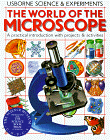

VanCleave, Janice. Microscopes
and Magnifying Glasses.
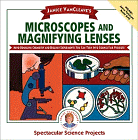

EARTH SCIENCE
Vancleave, Janice.
Earth Science for Every Kid.


DINOSAURS
Aliki. Digging
Up Dinosaurs. Harper & Row, 1981.


Aliki. Fossils Tell of Long
Ago.
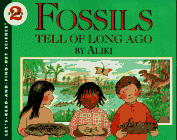

GEOLOGY
Brown, Marcia. Stone Soup.
Scribner, 1975.
Audience: Primary

Audience: Primary

Cole, Johanna. The Magic School
Bus Inside the Earth.
Audience: 2-6
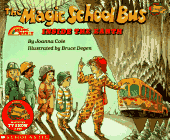
Audience: 2-6

This book takes the crazy and
wonderful Ms. Frizzle and her class on a field trip to the center
of the earth.
Cottonwood, Joe. Quake! A Novel.
Scholastic, 1995.
Grades 4-8
Description of the earthquake that struck the San Fransisco Bay
Area in 1989 as seen through three children who witness the quake and its aftermath.
Grades 4-8
Description of the earthquake that struck the San Fransisco Bay Area in 1989 as seen through three children who witness the quake and its aftermath.
Hooper, Meredith. A Pebble
in My Pocket. Viking, 1996.
Audience; Grades 3-6
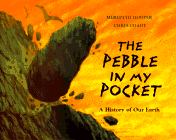
Audience; Grades 3-6

An engrossing, fact-laden nonfiction
picture book; children are treated to a trip back in geological
time to trace a pebble's origin 480 million years ago in a volcanic
eruption and then traces its subsequent development.
Kehert, Peg. Earthquake Terror
Audience: Grades 4-7

A peaceful camping trip becomes an exercise in survival for 12-year-old
Jonathan. This gripping novel provides a companion to several
units including: survival, disasters, geology, and earthquakes.
Audience: Grades 4-7

A peaceful camping trip becomes an exercise in survival for 12-year-old Jonathan. This gripping novel provides a companion to several units including: survival, disasters, geology, and earthquakes.
Seymour,
Simon. Volcanoes.
Awe-inspring photographs and easy-to-read text tells the dramatic
story of volcanoes.
Awe-inspring photographs and easy-to-read text tells the dramatic story of volcanoes.
Stieg, William.
Sylvestor and the Magic Pebble. Simon & Schuster, 1969.
Audience: Primary

Audience: Primary

Usborne Understanding Geography:
Earthquakes and Volcanoes.
VanCleave, Janice. Janice Vancleave's
Earthquakes.


VanCleave, Janice. Rocks and
Minerals.


VanCleave, Janice. Volcanoes.


WEATHER AND SEASONS
Barrett, Judi. Cloudy With
a Chance of Meatballs. Atheneum Books, 1978.
Audience: K-6

Audience: K-6

Bauer, Caroline
Feller. The Windy Day. Lippincott, 1988.
A collection of facts, stories, and poems about the wind.
A collection of facts, stories, and poems about the wind.
Coleride, Sara. January Brings
the Snow: A Book of Months
Audience: Primary
Audience: Primary
Each month brings something
unique and exciting in this book with a classic rhyming text
and beautiful illustrations about the changing seasons.
Cosgrove, Brian. Eyewitness
Weather

How do clouds form? Why does it rain? What causes tornadoes?
Aspiring meteorlogists will enjoy these photos and the text desribing
different aspects of weather and how it is forecast.

How do clouds form? Why does it rain? What causes tornadoes? Aspiring meteorlogists will enjoy these photos and the text desribing different aspects of weather and how it is forecast.
Hulpack, Vladimir. Ahalyute
and Cloud Eater. Harcourt Brace, 1996.
Polacco, Patricia. Thunder
Cake. Philomel Books, 1990


This book tells the story of
how a young girl's fear of thunder is removed through her grandmother's help.
Reddix, Valerie. Dragon Kite
of the Autumn Moon. Lothrop, 1991.
Audience: All Ages
In this magical picture book, Tad-Tin must set free the beautiful
dragon kite his grandfather made him.
Audience: All Ages
In this magical picture book, Tad-Tin must set free the beautiful dragon kite his grandfather made him.
Robbins, Ruth. How the First
Rainbow Was Made. Parnassus, Press, 1980.
Audience:K-6
The people ask the Old Man above for a sign that the rain will
end soon.
Audience:K-6
The people ask the Old Man above for a sign that the rain will end soon.
Shaw, Charles
G. It Looked Like Spilt Milk. Harper & Row, 1947.


Usborne Science & Experiments:
Weather & Climate. Usborne. The Usborne Book of Weather
Facts.
Facts.
Van
Allsburg, Chris. The Stranger
Audience: 4-6

Audience: 4-6

VanCleave, Janice. Weather.


HEALTH EDUCATION
Allison, Linda. Blood and Guts.

Includes information and activities that explain how the human
body works.

Includes information and activities that explain how the human body works.
LIFE SCIENCES
The Animal Kingdom
Aesop. Aesop's Fables


Bancroft, Henrietta. Animals
in Winter


Carle, Eric. Eric Carle's Animals,
Animals
Audience: All Ages

A compilation of over fifty poems illustrated by Carle.
Audience: All Ages

A compilation of over fifty poems illustrated by Carle.
Yolen, Jane. Alphabestiary
Animal Poetry

Animal Poetry

Amphibians
Lobel, Arnold. Frog and Toad
Are Friends.
Audience: Primary

Audience: Primary

This delightful book contains
five short stories about the amusing adventures of Frog and Toad.
A winner of the Caldecott Honor Award.
Schertle, Alice. Advice for
a Frog
Birds
Bonners, Susan. A Penguin Year.
Dell, 1981.
Hamilton, Virginia. When Birds Could Talk and Bats Could Sing.
Scholastic, 1996.

Collection of eight folktales centering around birds and bats.

Collection of eight folktales centering around birds and bats.
Heller, Ruth. Chickens Aren't
the Only Ones. Scholastic, 1981.


McLerran, Alice. The Mountain
That Loved a Bird. Picture Book Studio, 1985.


Stanley, Diane. Birdsong Lullaby. Morrow, 1985.
Insects and Spiders
Carle, Eric. The Very Busy
Spider. Philomel. 1984.


Carle, Eric. The Grouchy Ladybug. Crowell, 1977.
Audience" Primary

Audience" Primary

Carle, Eric. The Very Hungry
Caterpillar.

This is the classic story of a small and very hungry caterpillar
who eats and eats and eats and eventually becomes a beautiful butterfly through the process of metamorphosis.
Concepts: The life cycle of a butterfly and metamorphosis

This is the classic story of a small and very hungry caterpillar who eats and eats and eats and eventually becomes a beautiful butterfly through the process of metamorphosis.
Concepts: The life cycle of a butterfly and metamorphosis
Carle, Eric. The Very Lonely
Firefly


Carle, Eric. The Very Quiet
Cricket


Duncan, Lois. The Magic of
Spider Woman. Scholastic, 1996.
White,
E.B. Charlotte's Web.
Scholastic, 1952.
Audience: Grades 3-6

Audience: Grades 3-6

Charlotte the Spider saves
the life of her friend Wilbur the pig by weaving words in her
web. When Charlotte dies and is replaced by her children, Wilbur's young
owner learns of the cyclical nature of life and death.
Mammals
Baylor, Byrd. Amigo. Collier
Books, 1963.


Brown, Margaret
Wise. Big Red Barn. Harper & Row, 1989.


Byars, Betsy. Midnight Fox.


Byars, Betsy. Wanted...Mud
Blossom.


Heinz, Brian J. The Wolves.
Dial, 1996.
Grades 2-5

Illustrated with somber moonlit oils; follow Pahtow and his pack
of wolves as they hunt down elk
Grades 2-5

Illustrated with somber moonlit oils; follow Pahtow and his pack of wolves as they hunt down elk
Kipling, Rudyard. Just So Stories.
Audience: All Ages

Audience: All Ages

Kipling, Rudyard. The Jungle
Book
Audience: Grades 4-8

Audience: Grades 4-8

London, Jack. The Call of the
Wild.
Audience: Grades 4-12

Audience: Grades 4-12

London's tale of survival in
the Klondike. A German Shepard is stolen from his home and transported
north, having fell victim to the cruelty and greed incited by
gold fever. With the help of his new owner, he adapts to the
harsh life of a sled dog and overcomes the hazards posed by nature,
man, and beast to fulfill his ultimate destiny as the leader
of a wolf pack.
London, Jack. White Fang.
Audience: Intermediate-High School

Audience: Intermediate-High School

The tale of a ferocious wolf-dog's
transformation from a creature of the wild to tyhe faithful companion
of a caring and compassionate young man. Set amongst the Klondike
Gold Rush of 1897-1898 in Canada's Yukon Territory, the story
touches on the timeless themes of human-animal friendship and
human-nature interaction.
Paulsen, Gary.
Dogsong.


Seymour, Simon. Animal Fact,
Animal Fable Crown, 1979.
Audience: Grades 3-6

Audience: Grades 3-6

Yolen, Jane. All in a Woodlawn,
Early


Ocean Life
Carle, Eric. A House for Hermit
Crab


Hesse, Karen. The Music of
the Dolphins. Scholastic, 1996.
Grades 5-8

Rescued from the sea, Mila, raised by dolphins after her family's
plane was lost at sea; she attempts to
being with humans yet longs to return to her dolphin past.
Grades 5-8

Rescued from the sea, Mila, raised by dolphins after her family's plane was lost at sea; she attempts to
being with humans yet longs to return to her dolphin past.
Lionni, Leo. Swimmy.
Audience: Primary

Audience: Primary

This beautifully illustrated
book pictures life in the sea through the eyes of one little
fish who devises a plan to survive in his undersea world.
Pfister, Marcus. The Rainbow
Fish
Audience: Primary

Audience: Primary

Rainbow Fish learns that being
beautiful is not as important as the joy of giving and having
friends.
Podendorf,
Illa. Animals of
Sea and Shore. Children's Press, 1982.


Reptiles
Carle, Eric.
The Mixed-Up Chameleon. Harper & Row, 1975.
Audience: Primary

Audience: Primary

Plants
Burnett, Frances Hodgson. The
Secret Garden.
Audience: Intermediate

Audience: Intermediate

A wonderful, spooky story of
hope, healing, and spiritual renewal in a haunted house with
a withered garden.
Carle, Eric. The Tiny Seed.
Audience: Primary

Audience: Primary

Dazzling, colorful, collage
illustrations and a simple dramatic text tell the story of a
flowering plant's life cycle through the seasons. Concepts: Types
of seeds; growth cycle of plants
Cleaver, Vera and Bill. Where
the Lilies Bloom.
Audience: Intermediate-Middle School

Audience: Intermediate-Middle School

After her father coughs his
life away, 14-year old Mary Call Luther struggles to protect
her sisters and brothers from adults who would put then in an
orphanage. A Newbery-award winning book, this novel depicts how
Mary and her siblings try to keep their father's death a secret
while "wildcrafting"-gathering medicinal herbs to sell-in
North Carolina's Smoky Mountains.
Ehlert, Lois. Eating the
Alphabet: Fruits
and Vegetables from A to Z HBJ, 1987.
Ehlert, Lois. Growing Vegetable Soup. HBJ, 1987.
Audience: Primary

Ehlert, Lois. Growing Vegetable Soup. HBJ, 1987.
Audience: Primary

Ehlert, Lois. Planting a Rainbow.
HBJ, 1988.


Gibbons, Gail. The Seasons
of Arnold's Apple Tree.
Audience: Primary

Audience: Primary

This delightful story follows
Arnold through the year as he watches the seasons change his
favorite apple tree.
Heller, Ruth. The Reason for
a Flower. Putnam, 1983.


Silverstein,
Shel. The Giving
Tree.
Audience: All Ages

Audience: All Ages

The touching story of a tree
who loves a boy so much that the boy's happiness is more important
than her own. Bring out the hankies-this one is quite moving!
Physical Science
Bender, Lionel. Eyewitness
Invention.

This book will captivate and motivate children with creative
minds! Bender presents excellent illustrations to challenge the
scientists of the future. This volume of photos and text explores
such inventions as the wheel, gears, levers, clocks, telephones,
and rocket engines.

This book will captivate and motivate children with creative minds! Bender presents excellent illustrations to challenge the scientists of the future. This volume of photos and text explores such inventions as the wheel, gears, levers, clocks, telephones, and rocket engines.
Caney, Steven. Invention.

Besides featuring projects to start now, plus 35 great American
invention stories, this book explains each step of the process
of being an inventor. It siscusses the fundamentals of setting
up a workshop, building models of invention, creating a name
for it, plus record keeping, planning, packaging, and marketing.
This book leads children ages 10 and up into the world of creativity.

Besides featuring projects to start now, plus 35 great American invention stories, this book explains each step of the process of being an inventor. It siscusses the fundamentals of setting up a workshop, building models of invention, creating a name for it, plus record keeping, planning, packaging, and marketing. This book leads children ages 10 and up into the world of creativity.
Clements, Gillian. The Picture
History of Great Inventors.
Everything around us was invented by someone. Clements chose
60 inventors who met the challenge of solving problems and who
found new or better ways of doing things.
Everything around us was invented by someone. Clements chose 60 inventors who met the challenge of solving problems and who found new or better ways of doing things.
Lionni, Leo. Alexander and
the Wind-Up Mouse. Pantheon Books, 1969.


Macaulay, David. The Way Things
Work.
Also available on CD-ROM, the book comes to life, the CD helps
children comprehend the workings of machines, inventions, and
technology.
Also available on CD-ROM, the book comes to life, the CD helps children comprehend the workings of machines, inventions, and technology.
Audience: Grades 3-6


This book presents the priciples and workings of commonly used
machines and inventions. Carefully drawn illustrations aids in understanding the text.
This book presents the priciples and workings of commonly used machines and inventions. Carefully drawn illustrations aids in understanding the text.
Parker, Steve. The Random House
Book of How Things Work.

This comprehensive and highly visual guide takes the mystery
out of more tahn 300 everyday machines and mechanisms. Filled
with hundreds of cutaways, illustrations, and diagrams thattake
you right inside each machine and show you how the parts move
and what goes where.

This comprehensive and highly visual guide takes the mystery out of more tahn 300 everyday machines and mechanisms. Filled with hundreds of cutaways, illustrations, and diagrams thattake you right inside each machine and show you how the parts move and what goes where.
Vancleave, Janice. Electricity.


VanCleave, Janice. Machines.


VanCleave, Janice. Janice Vancleave's
Magnets.


Verne, Jules. Around the World
in Eighty Days.
Audience: 4-8

Audience: 4-8

SCIENCE IN GENERAL
Cassidy, John.
Explorabook.

I received this book from my husband John one Christmas but I
had a difficult time keeping it out of the hands of my own children!!
This is a 99-page hands-on-science museum designed for kids.
It's meant to be interacted with, since it's full of activities
and exhibits. It's not just a book-it's a tool; covers a wide-range
of science topics.

I received this book from my husband John one Christmas but I had a difficult time keeping it out of the hands of my own children!! This is a 99-page hands-on-science museum designed for kids. It's meant to be interacted with, since it's full of activities and exhibits. It's not just a book-it's a tool; covers a wide-range of science topics.
Headlam, Catherine. The Kingfisher
Science Encyclopedia.

This encyclopedia brings today's science principles within the
grasp of children's knowledge. A wide-rang of topics is presented
in alphabetical order and cross-referenced, this single volume
provides an unbelievable reference source for home or school.

This encyclopedia brings today's science principles within the grasp of children's knowledge. A wide-rang of topics is presented in alphabetical order and cross-referenced, this single volume provides an unbelievable reference source for home or school.
Seymour, Simon. Einstein Anderson
Tells A Comet's Tale. The Viking Press, 1981.
General Audience: Grades 4-6
Adam Anderson, who has received the nickname Einstein for his
intelligence in science, explains scientific facts. Each chapter
is a puzzle for children to solve. They then check their conclusions
with Einstein's.
Adam Anderson, who has received the nickname Einstein for his intelligence in science, explains scientific facts. Each chapter is a puzzle for children to solve. They then check their conclusions with Einstein's.
